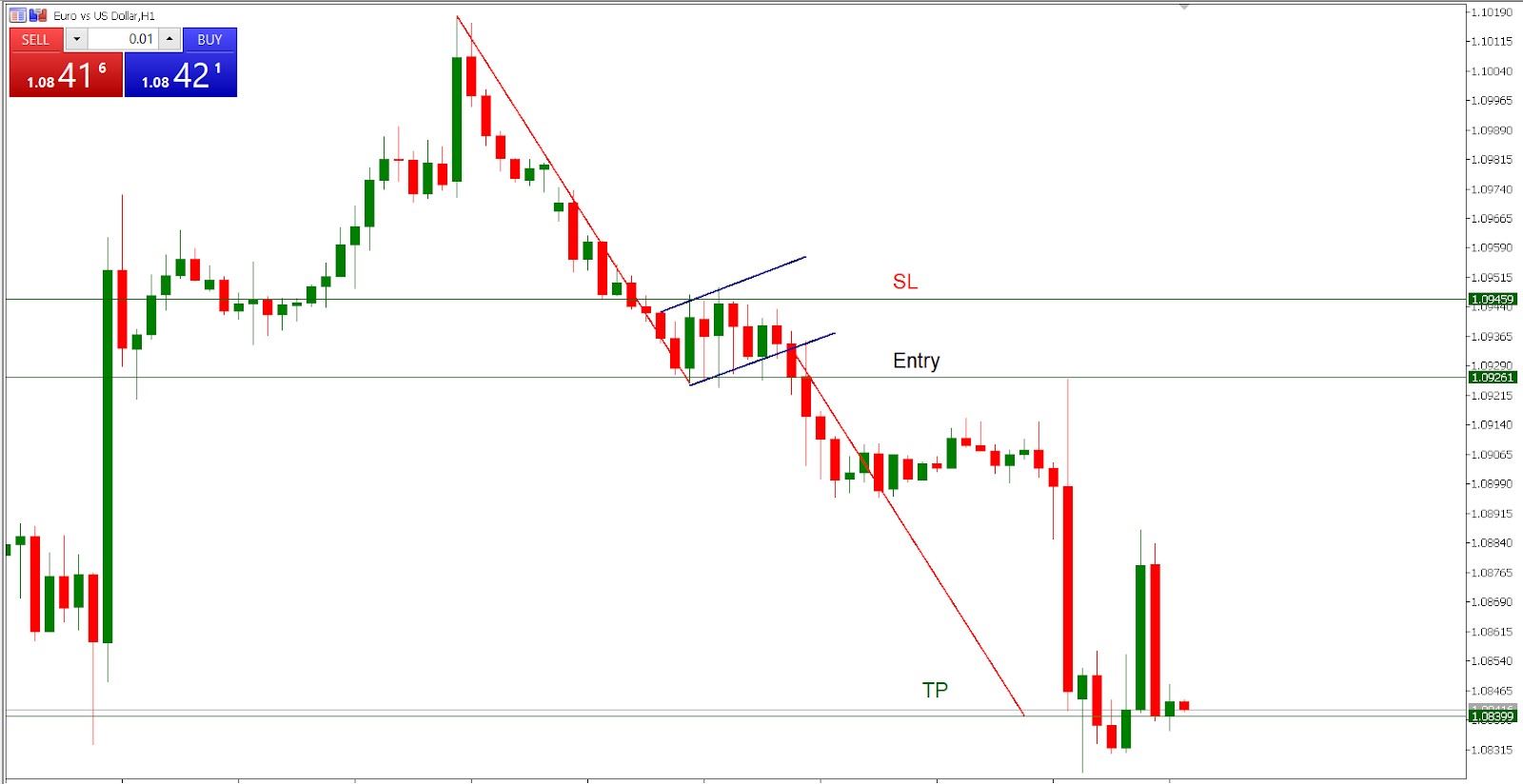Trading the Bear Flag Pattern
The process of trading the bearish flag is based on the same principles we apply when we trade other candlestick patterns. Once we spot the flag, we move to a wait-and-see regime to see whether a break of the supporting trend line will occur.
Many traders are too eager to enter the market and frequently “jump the gun” before the actual breakout has even occurred. Hence, do remember the pattern goes “live” only when the breakout takes place.
In our example, we are presented with both standard entry options after the breakout occurs. The first option results in the opening of a trade as soon as the breakout candle closes below the flag.
On the other hand, we may eventually opt to wait for a throwback, when the price action returns to the “crime scene” to retest the broken channel. This option offers a better risk-reward since the entry is at a higher price. Contrarily, the first option means you can’t miss out on a trade as there are no guarantees that a throwback may take place at all.

Just to make sure that we are in a trade, we choose option no.1. Hence, a sell trade is entered after the breakout candle closed comfortably below the lower trend line. The stop loss is around 20 pips higher from the entry and within the channel territory. As with the bull flag, a clean move to the inside of the flag invalidates the bear flag pattern.
The take profit level is calculated by measuring the distance of the flagpole. The trend line is then copy-pasted, starting from the point where the breakout occurred, with the ending point signalling a level where we should consider booking our profits, if the opportunity arises.
Ultimately, our take-profit order is hit, which results in gains of around 85 pips. Once compared with the associated risk of 20 pips, this makes for a very attractive R:R ratio. In case we opted for the second option, we would have gained 5 pips more and risked the same number of pips less.
Any opinions, news, research, analyses, prices or other information contained on this website is provided as general market commentary and does not constitute investment advice. ThinkMarkets will not accept liability for any loss or damage including, without limitation, to any loss of profit which may arise directly or indirectly from use of or reliance on such information.